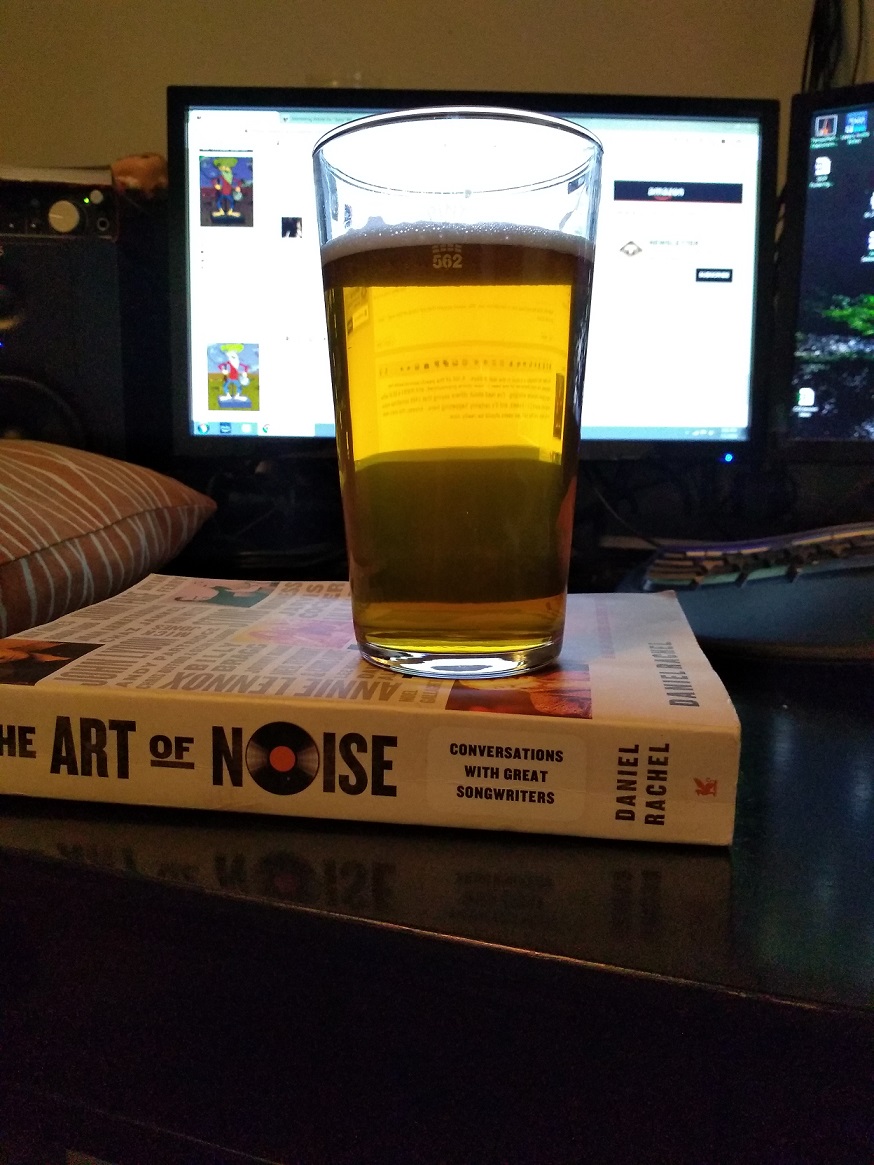Dustin_J
Well-Known Member
Good afternoon,
I've been working on restoring an Angram beer engine, and now that it's up and running I need a bitter! Inspired by the Shut up about Barclay Perkins blog entries regarding draft bitters in the 50s and 60s, I'd like to shoot for something right on the low-mid end of the draught best bitter examples discussed there. What do you all think of this as a starting point?
FYI, I'm not worried about brewer's caramel, roasted malts, etc. simply for color additions. Also, Wyeast lists 1469 as 67-71% attenuation, but the hope is that 1lb/13% invert sugar will help push that closer to 80%. The plan is to serve this as a "cask" beer, i.e. from the beer engine, 50-55 F, with ~1.5 volumes of co2 (initially through secondary fermentation in the corny keg, maintained with ~ 2-3 psi co2 via LP regulator/simulated cask breather).
Batch Size (fermenter): 5.50 gal
Estimated OG: 1.042 SG
Estimated Color: 6.4 SRM
Estimated IBU: 31.7 IBUs
Brewhouse Efficiency: 77.00 %
Est Mash Efficiency: 87.5 %
Boil Time: 60 Minutes
Ingredients:
------------
Amt Name Type # %/IBU
6 lbs 4.0 oz Maris Otter (Crisp) (4.0 SRM) Grain 2 82.0 %
6.0 oz Crystal Light - 45L (Crisp) (45.0 SRM) Grain 3 4.9 %
1 lbs Invert Sugar 1 (10.0 SRM) Sugar 4 13.1 %
1.50 oz Goldings, East Kent [5.00 %] - Boil 60.0 Hop 5 26.3 IBUs
1.00 oz Celeia [2.50 %] - Boil 15.0 min Hop 6 4.3 IBUs
0.50 Items Whirlfloc Tablet (Boil 5.0 mins) Fining 7 -
1.00 oz Celeia [2.50 %] - Boil 1.0 min Hop 8 0.4 IBUs
1.00 oz Goldings, East Kent [5.00 %] - Boil 1.0 Hop 9 0.8 IBUs
1.0 pkg (starter) West Yorkshire Ale (Wyeast Labs #1469) Yeast 10 -
Water:
-----------
Bru'n Water v.5.4 Water Adjustments
Profiles (ppm) Exist Target/Finished
Ca 12 64
Mg 19 19
Na 46 46
SO4 148 213
Cl 25 70
HCO3 18 18
SO4/Cl Ratio 3.0
Mash Schedule: HERMS Single Infusion - 152 F for 60 minutes
Fermentation Temp - 68 F (controlled)
Thank you!
I've been working on restoring an Angram beer engine, and now that it's up and running I need a bitter! Inspired by the Shut up about Barclay Perkins blog entries regarding draft bitters in the 50s and 60s, I'd like to shoot for something right on the low-mid end of the draught best bitter examples discussed there. What do you all think of this as a starting point?
FYI, I'm not worried about brewer's caramel, roasted malts, etc. simply for color additions. Also, Wyeast lists 1469 as 67-71% attenuation, but the hope is that 1lb/13% invert sugar will help push that closer to 80%. The plan is to serve this as a "cask" beer, i.e. from the beer engine, 50-55 F, with ~1.5 volumes of co2 (initially through secondary fermentation in the corny keg, maintained with ~ 2-3 psi co2 via LP regulator/simulated cask breather).
Batch Size (fermenter): 5.50 gal
Estimated OG: 1.042 SG
Estimated Color: 6.4 SRM
Estimated IBU: 31.7 IBUs
Brewhouse Efficiency: 77.00 %
Est Mash Efficiency: 87.5 %
Boil Time: 60 Minutes
Ingredients:
------------
Amt Name Type # %/IBU
6 lbs 4.0 oz Maris Otter (Crisp) (4.0 SRM) Grain 2 82.0 %
6.0 oz Crystal Light - 45L (Crisp) (45.0 SRM) Grain 3 4.9 %
1 lbs Invert Sugar 1 (10.0 SRM) Sugar 4 13.1 %
1.50 oz Goldings, East Kent [5.00 %] - Boil 60.0 Hop 5 26.3 IBUs
1.00 oz Celeia [2.50 %] - Boil 15.0 min Hop 6 4.3 IBUs
0.50 Items Whirlfloc Tablet (Boil 5.0 mins) Fining 7 -
1.00 oz Celeia [2.50 %] - Boil 1.0 min Hop 8 0.4 IBUs
1.00 oz Goldings, East Kent [5.00 %] - Boil 1.0 Hop 9 0.8 IBUs
1.0 pkg (starter) West Yorkshire Ale (Wyeast Labs #1469) Yeast 10 -
Water:
-----------
Bru'n Water v.5.4 Water Adjustments
Profiles (ppm) Exist Target/Finished
Ca 12 64
Mg 19 19
Na 46 46
SO4 148 213
Cl 25 70
HCO3 18 18
SO4/Cl Ratio 3.0
Mash Schedule: HERMS Single Infusion - 152 F for 60 minutes
Fermentation Temp - 68 F (controlled)
Thank you!
Last edited:



